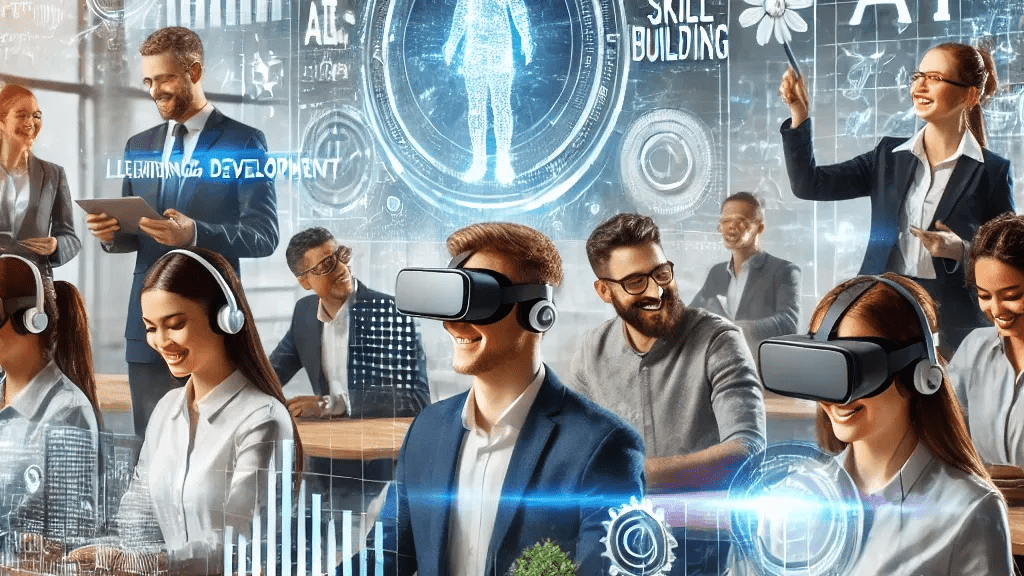Introduction

With AI and Generative AI (GenAI) making knowledge easily accessible, Learning and Development (L&D) managers face a crucial challenge—how to equip employees with the right skills for the future. Traditional training models are no longer sufficient in a world where automation and intelligent systems handle routine tasks. The focus must shift toward adaptability, creativity, and strategic thinking. This article explores how L&D managers can stay ahead of the curve, predict future skilling needs, and build a workforce that thrives amid rapid technological changes.
The Changing Workforce Landscape
The modern workforce is evolving rapidly due to:
- AI & Automation: Tasks once requiring expertise are now automated, demanding new skill sets.
- Remote & Hybrid Work: Employees need digital fluency to collaborate effectively across geographies.
- Shorter Skill Lifecycles: Technical skills become obsolete faster, requiring continuous upskilling.
- Personalized Learning Expectations: Employees seek hyper-personalized training experiences.
These factors make it critical for L&D leaders to rethink their strategies.
Leveraging AI for Personalized Learning
Andrea Lagan, COO at Betterworks, predicts that in 2025, employees will demand customized learning experiences. She states:
By leveraging AI to understand and respond to individual aspirations, organizations can demonstrate genuine investment in their people’s growth,
AI-driven learning platforms can analyze employee data to create adaptive, personalized training paths. Some effective AI-based learning models include:

AI-powered insights allow L&D teams to design learning pathways that align with both business needs and employee aspirations.
Predicting Future Skills: A Strategic Approach
L&D managers must move from reactive to proactive skilling strategies. According to Deloitte’s 2024 Workplace Skills Survey, 95% of employees believe human skills—such as emotional intelligence and critical thinking—are “timeless and always important.” Anthony Stephan, Chief Learning Officer at Deloitte U.S., warns:
“Organizations that overemphasize technical training at the expense of enduring human capabilities—like divergent thinking, emotional agility, and resilience—could end up impeding innovation.”
A smart approach to future skilling includes:

These approaches help companies future-proof their workforce.
- Learning in the Flow of Work: Embedding training into daily tasks through AI-driven nudges and micro-learning.
- Reverse Mentorship Programs: Encouraging younger employees to train senior staff on digital and AI skills.
- Skill-Based Hiring & Internal Mobility: Focusing on skills over degrees to unlock hidden talent within the company.
These initiatives ensure continuous workforce readiness for evolving job roles.
Measuring the ROI of L&D Programs
As L&D budgets come under scrutiny, demonstrating ROI is critical. Porter, a leading expert in corporate learning, identifies key metrics to evaluate learning impact:

Conclusion: The Future of L&D
L&D managers have a pivotal role in navigating workforce transformation. The key lies in blending AI-driven insights with human-centric learning approaches. By leveraging technology, fostering adaptability, and predicting future skills proactively, organizations can build a workforce that remains agile and competitive in the AI era.
Final Thought: Companies that embrace these advancements will unlock unprecedented opportunities to boost workforce performance and stay competitive in the digital age.